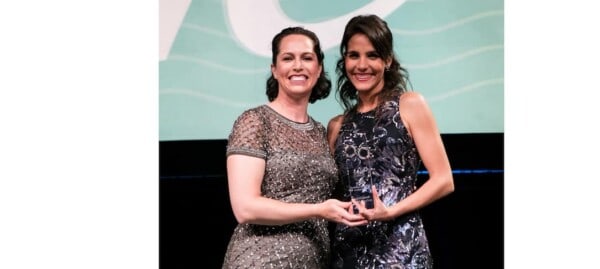“Older Americans have very high ownership rates,” Valerie Fletcher, executive director of the Institute for Human Centered Design in Boston, said, citing a Harvard University Joint Center for Housing Studies report, Housing America’s Older Adults 2019. “Of America’s 24 million homeowners 65 and over, fully 80% live in detached, single-family units. Twenty-two percent of 7 million senior renters live in single-family homes. The rest live in multifamily buildings — and the older they are, the larger the buildings. Those in their 80s may prefer larger multifamily buildings because they are more likely to be accessible.”
“Then, there’s a low-density phenomenon — the rural areas and small towns,” Fletcher continued. “And the shocking thing there is that nearly a third of households 65 and over live in low-density communities. That number is rising rapidly, jumping by 60% between 2000 and 2017. And they’re mostly women.”
The Harvard report states that for the next 20 years, people in their 80s will be the fastest-growing age group of homeowners in America. Yet little of this housing stock is designed or adapted for the functional limitations of aging. Neither are the surrounding environments. Modifications, such as widening hallways, remodeling for first-floor living and wheelchair accessibility, and building outdoor ramps to replace steps, can be expensive for those living on fixed incomes, and their families. Still, there is much that design and new technology can do, especially as health care for longer life spans increasingly happens at home.
REDEFINING DISABILITY AND UNIVERSAL DESIGN
The World Health Organization changed its definition of disability in 2001. “Disability is no longer considered a condition that resides in an individual,” Fletcher said. “It’s a negative byproduct of what happens at the intersection of a person with a functional limitation and their environment. It’s a combination of the physical, and also information, communication, attitude, and policy.”
It’s a universal experience to acquire functional limitations the longer we live, and the relationship between those limitations and aging is dramatic. “The giant gift to designers and engineers and the makers is that we have a chance to create a context that minimizes disability,” Fletcher said. “Functional limitation is a fact; disability is a byproduct of not recognizing it. Taking steps to deal with it in this context leads to longer-term independence, autonomy, and quality of life.”
Over time, a rebranding of universal design, also called “design for all,” has gained momentum. “As diversity is increasingly threatened,” Fletcher said, “the relationship between diversity and age, ability, culture, and design led us to change our preferred term of art from universal design to inclusive design.”

IHCD USER/EXPERT LAB
The Institute for Human Centered Design (IHCD), co-founded in 1978 as the Adaptive Environments Center by Elaine Ostroff, is a global leader in the inclusive design movement, providing technical assistance, training, and interdisciplinary design services and research from its headquarters in Boston. Its User/Expert Lab has a database of more than 500 people, ranging in age from 17 to 90, who help test designs, products, and services.
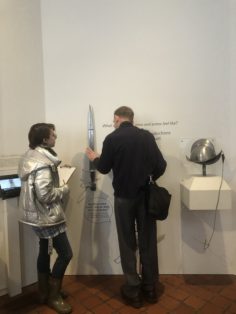
“User/experts are characterized as willing to admit to a functional limitation, whether it’s physical, sensory, or brain based,” Fletcher said. “They help identify what we need to do to improve their experiences. Recently, we brought a group to nearby Coolidge Corner, a very active, retail environment of local merchants. We tested what worked for older retail shoppers across a wide range of incomes and came out with three pages of tips for improving accessibility and user experience.”
Fletcher is passionate about the critical need to engage real people in the identification of problems to solve and obtaining data from user/experts about what works and what doesn’t. IHCD has worked with schools of design to introduce students to the power of working with people whose life experience is very different from the typical design student’s. “I would love to repeat this exercise with a group of engineers, because I’ve seen over and over that they’re hungry for it,” Fletcher said, recalling that on one project, no fewer than five engineering schools asked to participate. “One of the classic indicators of engineering thinking is their respect for learning from the expertise of lived experience.”
“IHCD is an international nonprofit and I’m very lucky to work globally,” she continued. “My team has been overwhelmingly designers. However, I’ve learned through the school of hard knocks, particularly with younger designers, that I am way better off hiring engineers. They are far less likely to rely on intuition, and use data and evidence to find a solution.”
TECHNOLOGY MAKING LONGER LIVES EASIER
Most of us have helped, or will help, a family member cope with growing older in a home that no longer meets their needs. Appliances too difficult for older hands and eyes, a bathtub that needs grab bars, kitchen cabinets unreachable from a wheelchair, stairs that pose fall risks — all of these problems and more are being tackled by designers and engineers, many at an affordable cost.
Fletcher serves on the board of directors of the International Association for Universal Design (IAUD) in Japan, whose mission is to “lead progress toward a more comfortable living environment for all through innovations in accessible housing design, products, and services.” IAUD annually hosts the International Design Awards. Here is a sampling of 2019’s age-friendly entries:
The Accessibility Digest, Calicrates (Spain) – A concise guide to inclusive design, with graphic and technical datasheets that include drawings; specifications; and worked, best-practice examples for different accessibility parameters, classified according to DALCO criteria (ambulation, apprehension, location, communication) and Spanish regulations.
VS Sub Comfort, Vauth-Sagel Systemtechnik GmbH & Co. KG (Germany) – A wheelchair-friendly kitchen cabinet design that offers easy access to bottom shelves of hinged-door cabinets. As it opens, two shelves slide out. The upper shelf can be pushed back, allowing easy reach to objects on the bottom. The shelf system retracts as the door closes, and the whole unit is spaced to accommodate wheelchair access. Installed lighting is also an option for dark spaces and low-vision users.
Wireless Handy TV Speaker [SRS-LSR100], Sony Corp. (Japan) – Remote-controlled, wireless TV speakers with sound processing that makes audio, including dialogue, crisper and clearer. Volume automatically adjusts to ambient sound, and a large volume control with an integrated power button simplifies use for older hands and eyes.
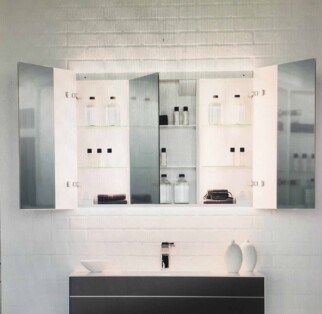
Softlit Mirror Cabinet, Gerig Design AG (Switzerland) – A bathroom cabinet that features ambient light from its top and bottom when closed, and nonglare, shadow-free light when opened. Four-time refraction creates soft illumination that is ideal for older users with low vision or light sensitivity, making daily grooming tasks more pleasurable.
IAUD also hosts the annual 48-Hour Marathon for Universal Design, which nurtures future inventors and designers, and encourages users with functional limitations to participate.
Policy Impacts How Well We Age
Valerie Fletcher earned an M.A. in ethics and public policy from Harvard University in 1989, an education she makes use of daily in her work as executive director of the Institute for Human Centered Design (IHCD). She strongly believes that public policies that support inclusive design are key drivers of successful aging in place, especially when the number of people 60 and over is expected to double by 2050 to 2.1 billion.
“For example, contrast the United States and Japan on assisted living,” she said. “In Japan, when those 60 and over acquire a certain set of functional limitations, the government provides assisted living. It’s a benefit, with no individual contribution required.
“And in Singapore, multifamily high-rise units with age-friendly amenities are affordable. There is a commitment to everyone building equity in home ownership, and no opportunity for gentrification that forces lower-income people out.”
For home hospice care, often the final stage of aging in place, Canada provides substantial in-home hospice support as a national insurance benefit. Norway, Sweden, and Switzerland rank consistently high on the list of countries with strong policies that support growing old and, ultimately, passing from life, at home.
By stark contrast, in the U.S., which does not have such policies, for-profit hospice agencies have become the most lucrative segment of the health care industry, far outnumbering nonprofit organizations.
As assisted living costs accelerate, and when many engineers express a desire to improve quality of life for families and societies, “it makes excellent sense for them to be influencers of public policy in these areas,” Fletcher said, warning that increasingly, equity once passed from parents to children is now being spent entirely on assisted living and health care. “We have to beat the drum in our culture to raise the alarm on these issues.”
AGING2.0 – INVENTORS FINDING INVESTORS
Katy Fike, Ph.D., was working on Wall Street on Sept. 11, 2001. After witnessing the terrorist attacks, she wanted to “do something more meaningful with my career.” She moved home to California, ultimately earning a doctorate in gerontology. In 2012, equipped with an earlier degree in systems engineering and experience in financial markets, she co-founded Aging2.0, an organization that connects engineers, inventors, and entrepreneurs with investors. Based in San Francisco, this community has grown to 40,000-plus members across 24 countries. Its volunteer-run chapter network is in more than 100 cities and has hosted more than 700 events.
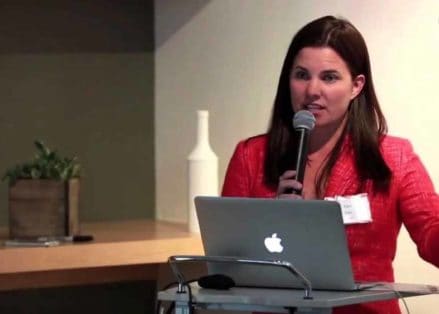
In a YouTube panel discussion, “The Future of Age-Friendly Communities,” Dr. Fike said, “The more 25-year-olds you can walk through the doors of senior centers, and the more older people you walk through the doors of engineering classrooms, the better. I also encourage people to look for aging-related classes. There’s really a need for these two groups to learn from each other.”
Three winning innovations awarded in Aging2.0’s multiple global startup pitch competitions stem from exactly the collaboration of engineers, designers, and users that Fletcher and Dr. Fike so strongly recommend:
GoGoGrandparent – an internet-based service that helps older adults maintain independence with on-demand transportation from providers, such as Uber and Lyft, with a simple phone call (no smartphone required). Rides are available 24/7 in 200-plus U.S. cities, with drivers trained and equipped to handle mobility issues, and usually cost 35% less than a taxi. Registration is free.
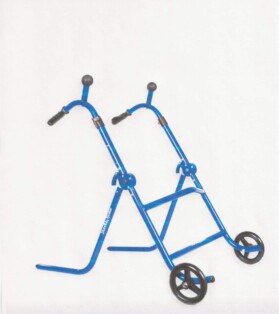
StandUp Walker – A walker with an ingenious, single-hinged joint that combines walking support with stand-assist functionality. Designed by a mechanical engineering student after his grandmother suffered a fractured hip, the StandUp takes the place of up to five home appliances, including standard walkers, powered chair risers, and extension bars on toilets. It costs less than $250, weighs 10 pounds (4.5 kg), and comes in bright colors — a refreshing departure from what Dr. Fike calls “beige and boring” design.
Teeniors™ – Founder and owner Trish Lopez got her startup’s idea of pairing teenagers with seniors after seeing her own mother struggle with digital technology. Based in Albuquerque, New Mexico, Teeniors’ intergenerational, reverse-mentoring has multiple benefits: Connecting seniors with young people helps them feel less isolated, more connected to society, and more able to live independently through technology, all while giving teens meaningful, paid work. Now in its fifth year, Teeniors has tutored more than 2,000 seniors in the Albuquerque region.
DESIGN WITH US, NOT FOR US
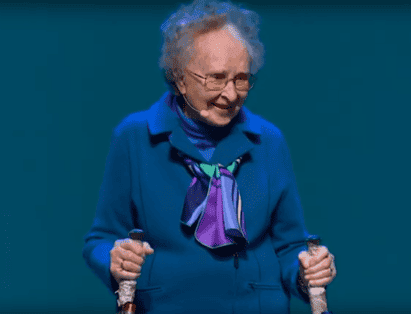
As Fletcher and Dr. Fike noted, designers and engineers need to better understand the lived experience of those who will use their products. Barbara Beskind personifies this concept: At the age of 95, she is a product designer for engineering firm IDEO, in Palo Alto, California. She was an inventor from childhood, but an engineering education was unavailable to most women of her generation. So she worked as an occupational therapist for 44 years, seeing firsthand the need for better-designed equipment. This led her, decades later, to create her own position as “conceptual designer,” and go back to work.
“It soon became known there was a 92-year-old working in Silicon Valley,” Beskind said to laughter, then cheers, in a January 2020 appearance for End Well. “And a woman, at that!”
Not long after, Beskind addressed a conference on aging at the White House, telling her audience: “Design with us, not for us.” Currently, she works with IDEO product designers, and her user/expert help has impacted their work. For instance, a team was developing glasses that could switch prescriptions with a hand gesture. Beskind, who is legally blind, but still works out at a gym four hours a week, alerted them to a design issue. The batteries were too difficult for arthritic hands to install, prompting a rethink of the design.
She urges designers and engineers developing products for seniors to spend at least a week or a month at an assisted living facility — a recommendation echoed by Dr. Fike. “People with loss of mobility, loss of vision, hearing, or memory all have different needs that must be witnessed to be understood.”
Beskind has designed 30 different pieces of equipment and clothing and has plenty of ideas for more. Her personal motto serves as good advice for us all: “Stay vertical, and move forward with a sense of humor and an inquisitive, creative mind.”
AGING WELL AROUND THE WORLD
Fletcher, who has served as a special advisor on inclusive design to the Open Society Foundations (formerly the Open Society Institute) and the United Nations Department of Economic and Social Affairs, offered her global perspectives. “Singapore, which was only founded in the 1960s and really created its own society, places a high priority on equity in general,” she said. “If you are Singaporean, which is a wildly diverse population of Malay, Chinese, and Indian, you can live in high-rise multifamily buildings, many of which have amenities you would find in America’s highest-cost multifamily communities.”
“Singapore decided early on that it didn’t want a separate tier of housing for the elderly,” Fletcher said. “So they designed options within the estates (1,200 to 2,000 units is typical), in a small footprint, high-rise model. There are pools, gyms, first-level retail, and services that cater to the elderly. You can age without leaving the community. You just move to a new unit designed for your stage of life and health.
“Then there’s London, where the whole bus system is accessible. All the museums have free admission, and the elderly spend a great deal of time in them. The museum cafes are like senior centers, full of elderly people who stay all day. The British made a commitment to inclusive design a long time ago that was partly stimulated by the 2012 Olympics, when they seized the opportunity to make the city work better for everyone.”
Fletcher also pointed to South Korea’s Seoul City Hall as a prime example of inclusive, age-friendly design. “It’s a very dramatic, green building, almost like a living plant. It’s remarkable because most of it is public space, with only three floors used by employees. The whole first floor is public, with tea shops and retail. Movies are shown there every day, and they’re almost entirely full of elderly people. It’s their gathering place in the city.”
Fletcher sees an across-the-board need for inclusive design strategies and projects in the United States. “We’re having the conversation around aging in place in an elderly-centric environment, but only for the top tier of income that has assets to convert.”
Universal/Inclusive Design Principles
The Institute for Human Centered Design was one of five U.S. organizations that collaborated to develop seven principles of universal design. They have served as a guide to designers and engineers since 1997:
• Equitable Use: The design does not disadvantage or stigmatize any group of users.
• Flexibility in Use: The design accommodates a wide range of individual preferences and abilities.
• Simple, Intuitive Use: Use of the design is easy to understand, regardless of the user’s experience, knowledge, language skills, or current concentration level.
• Perceptible Information: The design communicates necessary information effectively to the user, regardless of ambient conditions or the user’s sensory abilities.
• Tolerance for Error: The design minimizes hazards and the adverse consequences of accidental or unintended actions.
• Low Physical Effort: The design can be used efficiently and comfortably, and with a minimum of fatigue.
• Size and Space for Approach and Use: Appropriate size and space is provided for approach, reach, manipulation, and use, regardless of the user’s body size, posture, or mobility.
©Center for Universal Design, School of Design, State University of North Carolina at Raleigh
“Inclusive Design for Living Longer” was written by Seabright McCabe, SWE Contributor. This article appears in the 2020 spring issue of SWE Magazine.
Read more from the 2020 spring issue of SWE Magazine:
- Feature: Toward More Accessible Work Environments
- Feature: Engineering for Good
- Feature: Women Engineers You Should Know
- SWE Forum: From Congressional Visits to the “New Normal” Brought by COVID-19
- Opening Thoughts: Access: A Matter of Human Rights
- News & Advocacy: COVID-19: STEM Strikes Back
- News & Advocacy: Momentum, Authenticity, and Pivoting: The State of Women in Politics
- News & Advocacy: Visiting Congress During a Global Health Crisis
- News & Advocacy: People
- Career Pathways: Shelter-at-Home Orders Put Spotlight on Disability Accommodations
- President’s Note: Joy and Relevance in the SWE Mission
- Life and Work: Is Sitting the New Smoking?
- Reinvention: From Fixing up My Home to Helping Others Construct Theirs
- Media: Invisible Women: Exposing Data Bias in a World Designed for Men
- Viewpoint: Then and Now: Personal Reflections on Accessibility
- In Memoriam: Marta Kindya, 1946-2019
- Closing Thoughts: Community in Times of Crisis
- Scrapbook: Announcing a New Arrival







